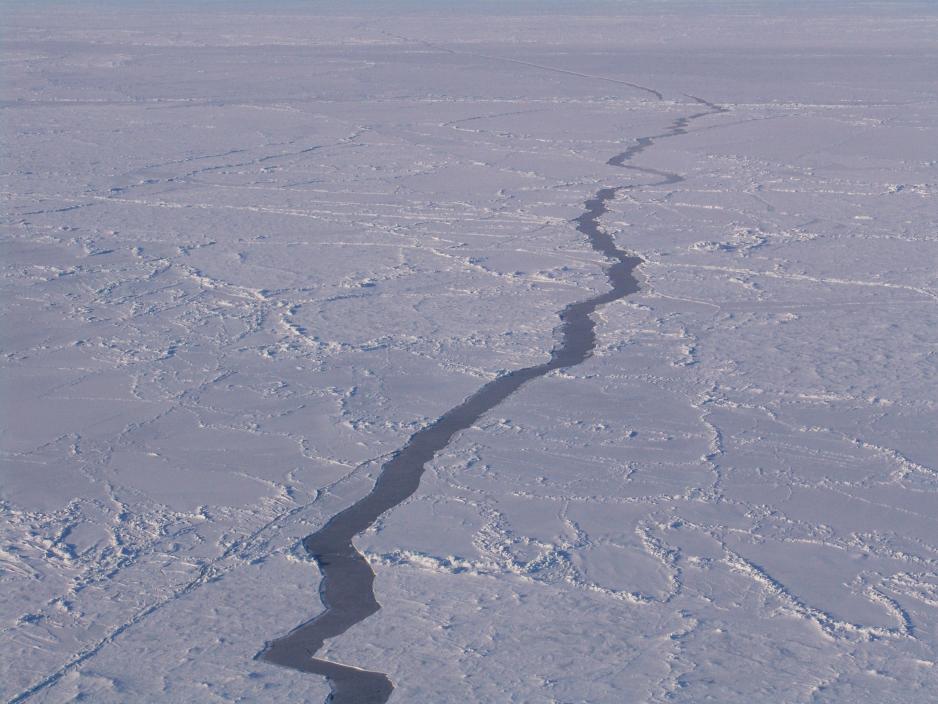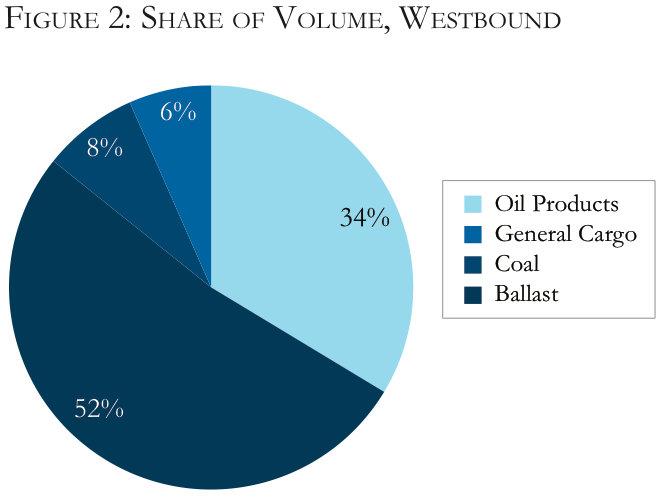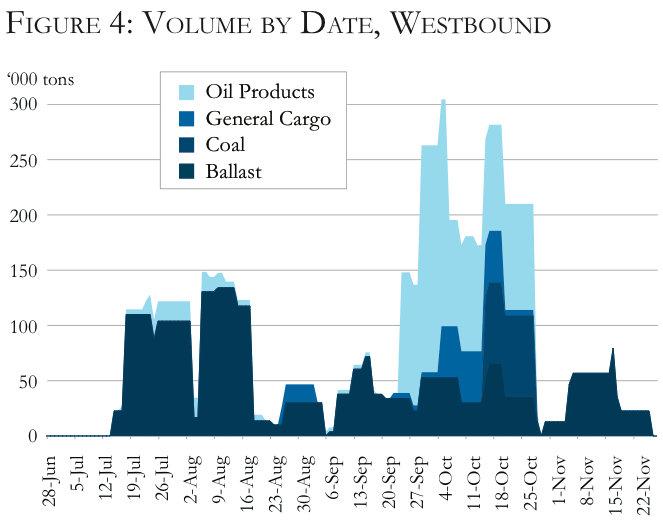New analysis on the Northern Sea Route

A new report by The Arctic Institute examines the 2013 Northern Sea Route shipping season.
A new report by the Institute’s executive director Malte Humpert questions how realistic it is, that Arctic shipping routes will rival traditional shipping routes and complement the Suez Canal as the key waterway for trade to and from Asia, which has been predicted by some.
A limited trade route
Among the findings are that oil products, including diesel, fuel oil and naphta constitute the greatest portion of cargo. In all a total of 31 vessels carried 911,000 tons of oil products. This represented 67 percent of all cargo. Second largest was iron ore that constituted 15 percent of all cargo through NSR last year, in total 203,000 tons. Coal deliveries represented 5,5 percent of traffic, and LNG 5 percent.
A single shipment by the "Arctic Aurora" carried all of the LNG, 66,868 tons, from Hammerfest to Chiba.
The report also states that transits in the Northern Sea Route (NSR) is dominated by eastbound shipment, while in westbound transits more than half of the shipment is ballast.
The report concludes that NSR will be a very limited trade route, mostly used for export of natural resources.
- Some niche companies will find business opportunities in the NSR, but it will not affect or alter existing trade routes. It will be solely supplementary and very niche, says Humpert.

No official numbers yet
Numbers from the Northern Sea Route Information Office lists 71 transits through NSR in 2013. But with a closer analysis of the data, Humpert found that only 41 of these transits made the entire length of NSR and qualify as full transits. Humpert found that 23 vessels either departured from or arrived at ports inside the NSR. Further, seven vessels traveled exclusively within the NSR route.
According to the NSR Information office 28 ships were assisted by Rostamflot's icebreakers. It is unclear what share of these ships were full transits.
- But is is safe to say that it will be much less than last year, Humpert says. He participated at the Artic Circle conference in Reykjavik last weekend, and estimates are that 30 transits will have occurred once the shipping season concluses at the end November.
Surprising 2014
Recent years the sailing season through NSR has been open for transit from the beginning of June, and have lasted through October.
However, in 2014 ice conditions were more difficult delaying the opening of the route until late August. This goes to show that the melting of ice is does not follow a linear progression but that significant variations can occur from year to year.


The executive summary and the full version of the report is published on the Institute’s website. An abbreviated version is also part of the Arctic Yearbook 2014, which was launched at the Arctic Circle conference.
The Arctic Yearbook, that is an annual publication by Northern Research Forum and the University of the Arctic Thematic Network (TN) in the areas of Geopolitic and Security.
Humpert previously published a report on the economics of shipping along the NSR and the role of, and potential for China in Arctic shipping. The report is titled, "The Future of Arctic Shipping: A New Silk Road for China?"
The Institute’s reports analyze and interpret available data to bring balance to the debate about Arctic shipping and to explain why scenarios of an Arctic shipping highway, that will transport a significant share of global trade, are unrealistic.


